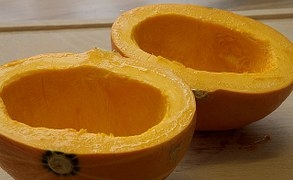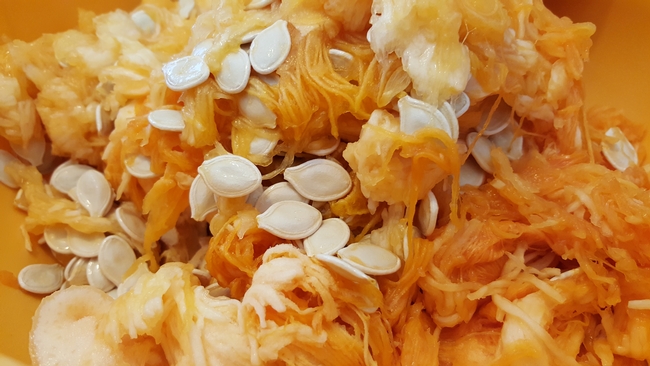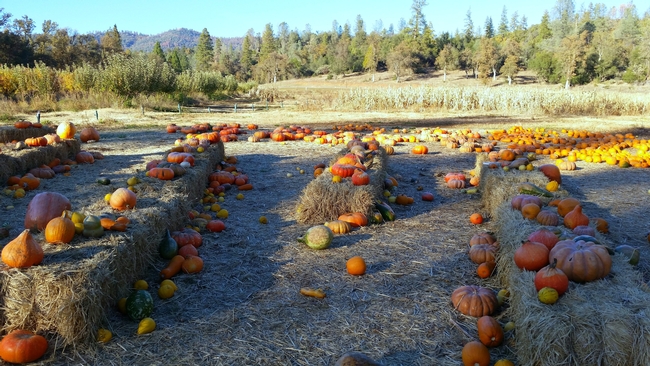
In addition to those grown for use as jack-o-lanterns, varieties such as Sugar Pie and Fairytale work well in the kitchen.
The seeds
Seeds become crunchy snacks when dried and roasted. For both techniques, thoroughly remove the stringy bits of flesh that cling to the outer layer of the seed. Dry at 115°-120°F for 1 to 2 hours in a home dehydrator or in a warm oven for 3 to 4 hours; alternatively, seeds can be dried in the sun. Rotate seeds regularly to promote even drying and avoid scorching. Dried seeds can then be roasted in a 250°F oven with a light spritz of oil and salt for 10 to 15 minutes.
The flesh
Wash the exterior of the pumpkin and remove the seeds and accompanying fibrous strands. The flesh can be skinned and cubed into 1-inch pieces as a starting point. Some home preservation options include:
- Pressure canning – in CUBES only. Do not mash or puree. Put that food processor away; keep botulism at bay.
Note that contents can be mashed when removing the jar from the pantry for use in such foods as pumpkin butter, ice cream, and pie all year round.
- Drying –
- in 1/8-inch thick pieces for a chewy snack.
- make a leather: cook and puree flesh with honey, cinnamon, nutmeg and cloves. This is an appropriate and safe use of that food processor.
- Freeze – cook, mash, cool and freeze for future use.
Want to learn more about the details of these processes? Take a UC Master Food Preserver class or ask a UC Master Food Preserver volunteer. Many programs are accepting applicants for upcoming trainings. The UC Master Food Preserver Program is open to individuals looking to increase community knowledge in home food preservation methods. Applicants for the UC Master Food Preserver Program must be willing to share knowledge and skills learned from the certification training through local community outreach. Prior food preservation knowledge is not a requirement; willingness to teach others is.
Come full circle by saving seeds for next year's garden. Keep seeds and preserved pumpkin products in a cool, dry place until ready to use. Plant seeds in June for an October harvest and go easy on the water – pumpkins make the list of water wise vegetables, according to the UC Master Gardener Program of Marin County. The Pumpkin Production in California publication notes, “Excessive irrigation aggravates root and stem rot problems and increases humidity in the lower canopy, which contributes to foliage and fruit disease.”
If time cannot be carved out for pumpkin preserving this year, the UC Davis Arboretum offers a Carve ‘n Compost workshop later this month. With all these options, be sure to enjoy this October's harvest in one of its many forms.
This story en español.

